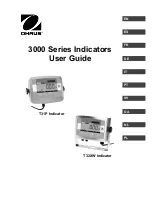
9
MAINTENANCE
•
In order to maintain the optimum output of the
module quality and safety, please conduct
periodic inspection or cleaning.
•
It is also recommended to inspect the electrical
and mechanical connections annually.
•
If you need electrical or mechanical inspection
or maintenance, it is recommended to have a
licensed authorized professional carry out the
inspection or maintenance to avoid the hazards
of electric shock or injury.
ANTI
-
REFLECTION GLASS SURFACE
CLEANING
•
Light dirt that does not shield light completely,
does not significantly degrade power genera-
tion performance, but if the module surface
becomes dirty, it may reduce output power.
Malfunctions or hotspots may occur.
•
It is recommended to clean the surface of the
module with water and a soft cloth or sponge.
•
When cleaning with neutral glass detergent or
weak alkaline glass detergent, it is recommend-
ed to start with smallest area and from the
edge of solar module in order to check no
damage occurs to the glass.
•
After that, clean surface of glass with wet and
clean cloth.
•
Recommended detergents: "Glass Magiclean"
1
or "Windex® Original"
2
1
Glass Magiclean is a trademark of Kao Corporation.
2
Windex® is a trademark of SC Johnson & Son,Inc.
•
It is recommended to read carefully the manu-
als of detergent and understand notes on usage
and first
-
aid treatment.
•
To remove persistent dirt, the module can be
washed with a micro
-
fiber cloth and ethanol.
•
Never use abrasive detergent, strong alkaline
detergent, strong acid detergent or a detergent
which forms a protective layer on the surface of
the glass to clean any part of the module. The
performance of a solar module may be re-
duced. Please be very careful since the guaran-
tee will not cover damages caused by deter-
gents.
•
When cleaning the PV module, please do not
put detergent on the junction box or connector.
If detergents and chemical substances adhere,
the junction box and connectors may be deteri-
orated or damaged.
DISPOSAL OF OLD EQUIPMENT
This symbol on the products, and/
or accompanying documents
means
that used electrical and
electronic products must not be
mixed with general household
waste.
For proper treatment, recovery and recycling of old
products, please take them
to applicable collection
points in accordance with your national legislation.
For more information about collection and recycling,
please contact your local municipality.
Penalties may be applicable for incorrect disposal of
this waste, in accordance with national legislation.
DISCLAIMER OF LIABILITY
Panasonic does not assume responsibility and ex-
pressly disclaims liability for loss, damage, or expense
arising out of, or in any way connected with installa-
tion, operation, use, or maintenance by using this
manual.
Panasonic assumes no responsibility for any infringe-
ment of patents or other rights of third parties, which
may result from use of modules.
No license is granted by implication or under any
patent or patent rights. The information in this manu-
al is believed to be reliable, but does not constitute an
expressed and/or implied guarantee.
As part of our policy of continuous improvement,
Panasonic reserves the right to make changes to the
product, specifications, or manual at any time without
prior notice.
The return of any modules will not be accepted by
Panasonic unless prior written authorization has been
given by Panasonic.
CUSTOMER SERVICES
For further information, please visit eu
-
solar.panasonic.net or contact a Panasonic Author-
ized Representative.
© SANYO Electric Co., Ltd. 2018
All Rights Reserved Dec. 20. 2018
SANYO is part of the Panasonic Group and is in charge
of the manufacturing process of HIT
TM
.
IME002
-
0918
-
2




























